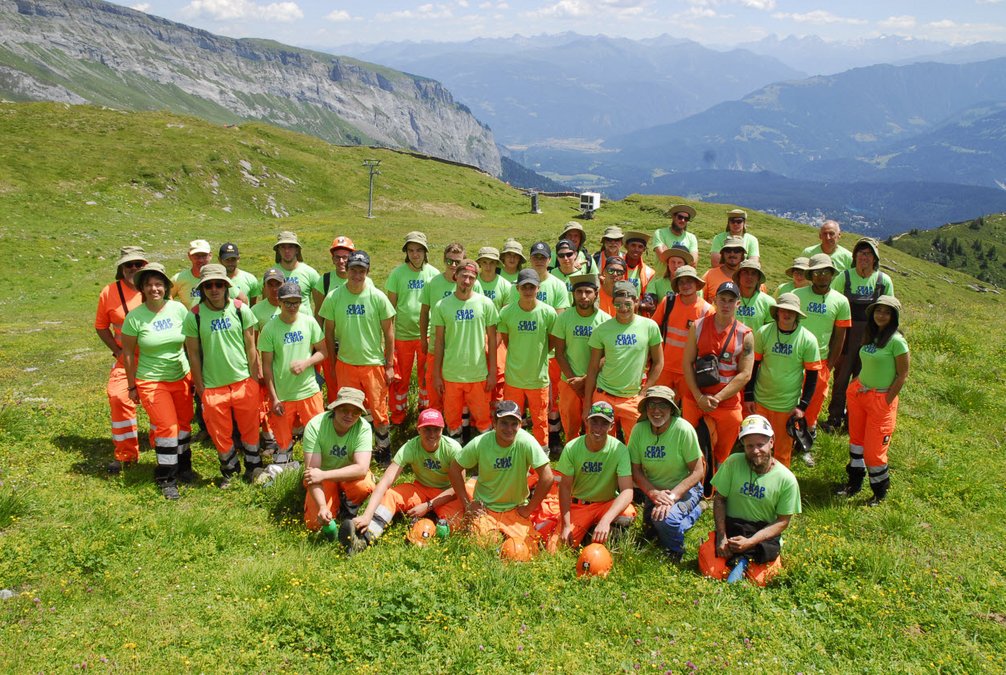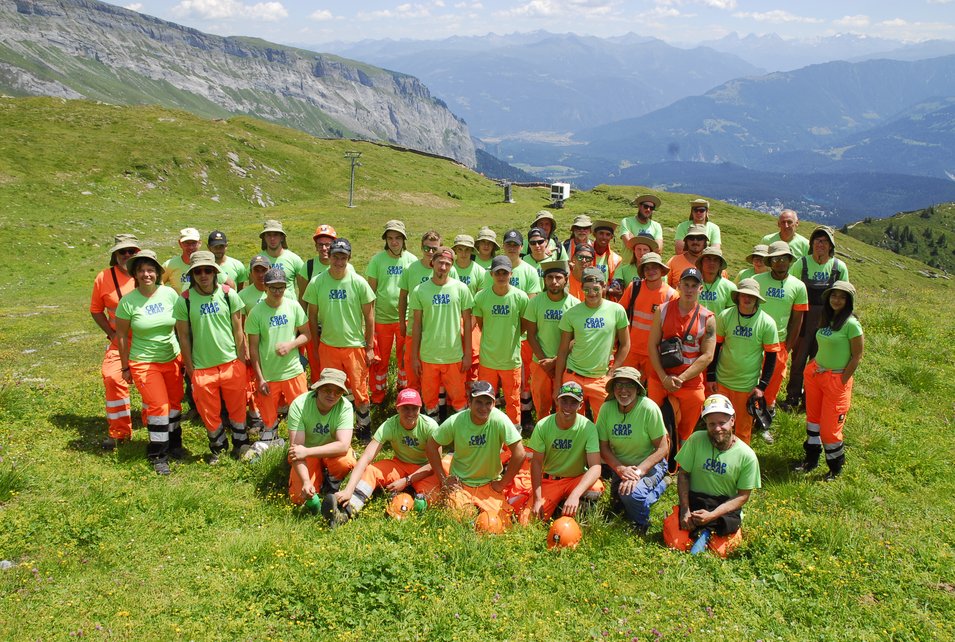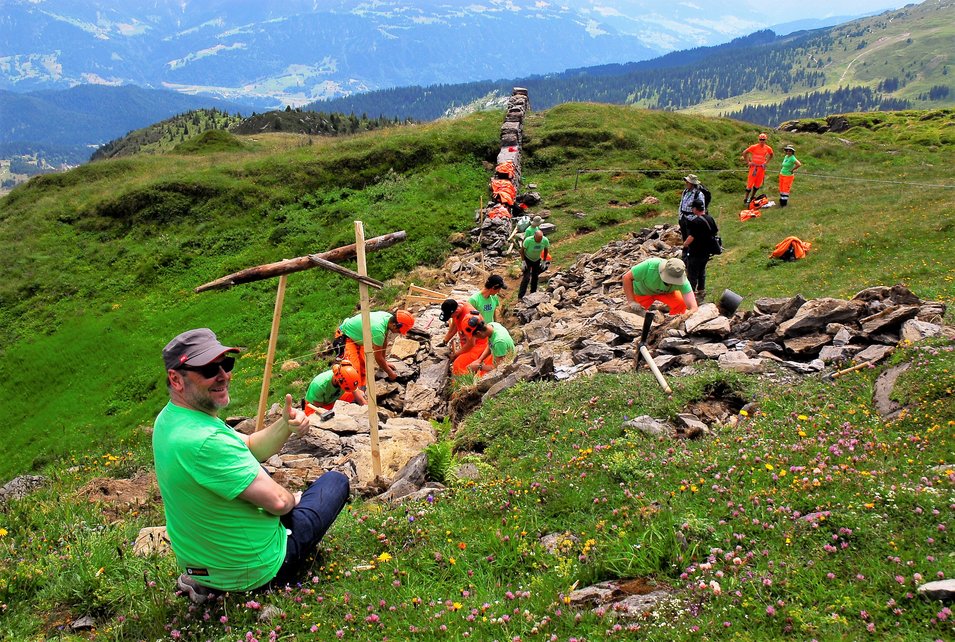Crap sin Crap

“Crap sin Crap” is Romansch and literally means “Stone on Stone”. And it is the perfect description of how Implenia apprentices went about replacing parts of a traditional dry-stone wall in the canton of Grisons in July 2018. Although it sounds easy in theory, the work involved is strenuous – especially in the heat of the mountain sun some 2,000 metres above sea level. A good eye, a lot of strength and a great deal of patience are required to get every piece of rock precisely in the right place and sitting securely.
The 40 apprentices were on repair duty up the mountain from Laax as part of their week of community work. Implenia organises one of these for all its trainees after their second year to enable its young talent to gain unique experience by contributing to a charitable endeavour.
The mountain community in Grisons were delighted by the support they received from the volunteers. The impressive structure on the Nagen mountain is 1.2 kilometres long, making it one of the longest dry-stone walls in the Alps. However, the past few decades had not been kind to this jewel of cultural history, which dates back to the 19th century, with storms and strong winds gouging out numerous holes.
Following an introduction to the traditional art of dry-stone walling, the apprentices from all over the country threw themselves into the task, collecting suitable stones, mending the sections that had collapsed and rebuilding some parts completely from scratch. In the process, they not only gained an insight into an ancient craft but also discovered how to work together successfully and across language barriers. When they had finished, the wall once again looked more or less how it did when our ancestors built it 140 years ago.
Dry-stone walls can be found on virtually every mountain in the Swiss Alps. They form part of Alpine culture and are a typical feature of the landscape, while the stones found lying about in the mountain pastures provide their basic building material. They are built to improve the quality of grazing land over the long term and form a safe and secure perimeter fence for cattle. Boasting a rich diversity of structures, the walls also provide a valuable natural habitat for animals like insects and lizards. Since time immemorial, therefore, they have boasted qualities that we nowadays call “sustainable”.



